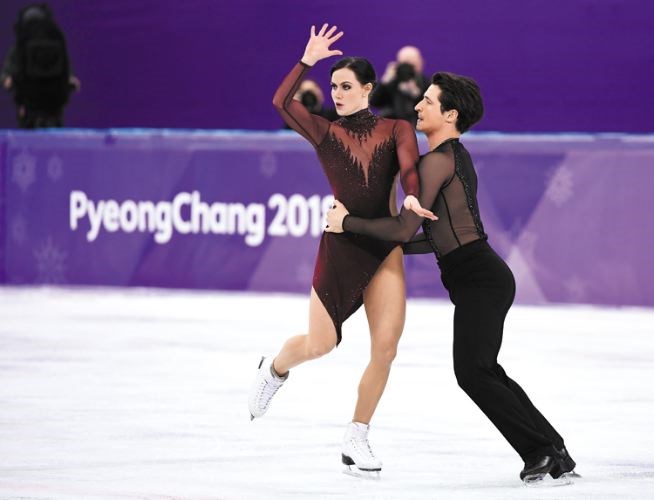To a first approximation, skating is skating is skating.
Whether it is hockey, ringette, speed skating, or figure skating, the underlying physics involved in moving across an ice surface is the same. Skating is just the practical application of Newton's Laws of Motion.
Newton's First Law tells us an object at rest will stay at rest but an object in motion will stay in motion - unless a force is applied. In the case of skating, once a skater has built up speed, they can glide for a long distance. The slipperiness of ice reduces friction so a skater remains in motion without additional effort or force.
This is perhaps best seen in figure skating where athletes will glide for a stretch as they set up for a particularly difficult jump.
Newton's Second Law tells us acceleration is the result of the application of force to a mass. The greater the force applied to a given mass, the greater the acceleration.
Hockey players rely on acceleration as they switch directions and quickly get back to maximum speed. In long track speed skating, maximum acceleration occurs at the beginning of a race as the athletes are sprinting across the ice.
In figure skating, the second law controls the graceful curves. A change in velocity, which is both speed and direction, requires acceleration. Travelling in a circle at a constant speed involves acceleration because of the constantly changing direction.
Newton's Second Law also explains why female figure skaters, who are much smaller than male skaters, can still go as fast. Less mass means less force is required for the same amount of acceleration. Indeed, less mass has all sorts of advantages in figure skating.
Newton's Third Law says for every action, there is an equal and opposite reaction. This is the basis of all forms of skating. As the blade digs into the ice, the skater pushes against the edge applying force backwards resulting in forward motion - the direction opposite to the push.
However, while Newton's Laws underlay all forms of skating, there is even more physics involved. For example, figure skating is also about combining projectile motion and angular momentum to maximum effect.
Projectile motion is the motion an object takes when thrown over a short distance. It is a parabola with the take-off and landing angles are the same. It is a combination of vertical and horizontal velocity with the acceleration due to gravity.
As a skater leaps into the air, they have maximized their vertical velocity but gravity slows them down. At the top of their jump, their vertical velocity is exactly equal to zero and they start to descend. Gravity takes over and they are brought back to earth.
The amount of time in the air is dependent upon the take-off angle and velocity. A typical skater travels at 10 metres per second. By using their legs and skate blades, they are able to translate this velocity into upwards motion. With a vertical velocity of 3.13 m/s, they reach a height of 0.5 metres for the jump with a hang time of 0.638 seconds which is typical for male skaters.
If they are trying to do a triple toe, they have exactly 0.638 seconds to complete three rotations. (In a triple Axel, they actually have to complete 3.5 rotations.)
This is where angular momentum comes into play. In order to complete three rotations in 3/5th seconds, figure skaters must spin at 300 rpm. This is why their spins in the air tend to be a blur to the average spectator.
To achieve this rate of spin, a skater uses their time coasting across the ice to prepare their arms. By spreading their arms wide and extending their free leg then pulling them in at the same time as twisting their body on take-off, they are able to conserve their angular momentum.
The result is a rapid spin.
The effect arm and leg positions have on a skater's rate of spin is perhaps better seen during the spin component of any program. Bringing their arms or leg from an extended position closer to their body dramatically increases the rate of spin. Changes in the rate of spin are also seen when an athlete changes position such as going from a camel spin to a sit spin.
The combination of arms and legs working in unison allow figure skaters to pull off triple and quadruple jumps. Of course, the various jumps also rely upon using the toe pick correctly, the choice of edge, and on having soft ice. Then there is the four Gs of force they have to fight just to bring their arms into position and the seven Gs of force they experience on landing. Yes, there is lots of science.
Figure skating in many ways is a demanding sport but success is all about mastering the physics of skating.



